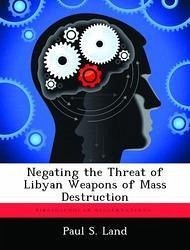Nicht lieferbar

Slowing the Genie's Spread: Reversing the Proliferation of Weapons of Mass Destruction
Versandkostenfrei!
Nicht lieferbar
The rise of US conventional aerospace capabilities as displayed in Operation DESERT STORM and in all later conventional combat operations combined with the breakup of the USSR has greatly changed the way the US, our allies and potential adversaries view the value of weapons of mass destruction (WMD). Given the great expense and time required to develop, organize, train and equip conventional forces to counter US aerospace capabilities, potential adversaries will likely view WMD capabilities as a viable alternative. US, allied and international efforts to insure national and alliance strategy, ...
The rise of US conventional aerospace capabilities as displayed in Operation DESERT STORM and in all later conventional combat operations combined with the breakup of the USSR has greatly changed the way the US, our allies and potential adversaries view the value of weapons of mass destruction (WMD). Given the great expense and time required to develop, organize, train and equip conventional forces to counter US aerospace capabilities, potential adversaries will likely view WMD capabilities as a viable alternative. US, allied and international efforts to insure national and alliance strategy, arms control efforts, operational planning and fielded capabilities must adapt from Cold War "mindsets" to counter these potential threats. This paper identifies the theoretical debate on why states chose to possess WMD capabilities and how they chose to control their use. It reviews US and international efforts to identify, track, deter and control the development and deployment of WMD after the demise of the USSR in 1991. A theoretical model of emerging WMD nations is proposed to assist in shaping counter proliferation policy and capabilities.







